Foraging Weeds: Garlic Mustard and Plantain Weed
My first foray into the wonderful world of foraging was with the popular Daylily, a perennial flower found decorating most lawns and fields in the North Country. But in case digging up the front lawn isn’t quite up your alley, what about eating some pesky weeds taking over the garden?
I recently joined Josh Carter on a forest walk near the Little River, where he pointed out different flowering berries, a weed called skunk cabbage (that smelled just fine to me), and a myriad of other wild plants. However when it came time to gather greens for our lunch, we headed back towards the house as that’s where the garlic mustard and plantain weed could be found. Convenient that the most persistent, people-seeking weeds are edible!
Both plants have European origins, yet are now widespread across the United States. They will also pop up just about anywhere with dirt and sunlight, so one can even feel noble while picking and cooking them.
Garlic Mustard
Garlic mustard, or Alliaria petiolate, was brought over by the British for its garlicky flavor. Because it so often grows along the border of hedges, its earned nicknames like Jack-by-the-hedge and Jack-in-the-bush.
It quickly spread across the Northeast and Midwest, reducing biodiversity in the undergrowth of many forests. Harvesting the leaves is easy; you can either uproot the entire plant (it is classified an invasive species) and take the leaves off in the kitchen or pick them directly off the plant.
Ways I would cook with the Garlic Mustard:
- Whiz up with oil and nuts to make a naturally garlicky pesto (see recipe below).
- Add the delicate leaves at the last moment to a vegetable stir-fry.
- Mix into a green salad for a little bite in place of arugula or sorrel.
- Boil briefly and then puree into a cold soup, adding olive oil, salt, pepper, and a little cream.
Plantain Weed
Plantain weed, or Plantago major, is not considered an invasive species, but it is still quite prolific. It thrives anywhere with full sunlight and short grass, so you’ve most likely got a patch on your lawn or in your garden! Plantain is actually medicinal as well as edible, and has been used in Europe as the main ingredient for poultices to treat stings and wounds. A tea made with the leaves is known to treat diarrhea and soothe the stomach. Crouch down and pick the leaves right off the plant. The smaller the leaves, the more tender.
Ways I would cook with Plantain:
- Sauté with onions and butter.
- Add into stews and soups the same way you would kale or swiss chard.
- Add to boiling water, add honey, and sip as a summer tea.
I used the garlic mustard to whip up a garlicky pesto, sans any added garlic. The pesto is slightly bitter, but paired with meat, omelets, or added to an olive oil and vinegar salad dressing, the flavor is just right. The plantain leaves, a little more fibrous, needed a good sauté to become palatable, but added a nice, sharp flavor to a frittata.
Garlic Mustard Pesto
Ingredients:
- ½ pound of garlic mustard leaves
- 1/3 cup nuts (I used pecans, but sunflower seeds, walnuts, and pine nuts would all be delicious as well!)
- ¼ cup olive oil
- 2 teaspoons lemon or lime juice
- 1 tablespoon of water
- Salt and pepper, to taste
Directions:
- Add all the ingredients to a blender or food processor and pulse until fully combined and spreadable. If it seems clumpy, add a little more water or oil. Add salt and pepper to your own taste near the end.
- Add to salad dressings, spread on toast, rub on meat before cooking to inject some flavor, dollop onto eggs – the sky is the limit!
Plantain Leaves Frittata
Ingredients:
- 1 onion or several shallots, diced
- 2 tablespoons of olive oil or butter
- Several handfuls of plantain leaves (they don’t reduce much), sliced into thin strips
- 6 eggs, whisked together, plus a splash of water or milk
- Salt and pepper, to taste
Directions:
- In a large frying pan (preferably cast iron) on medium heat, sauté the onions in half the oil or butter until golden.
- Add the thinly sliced plantain leaves, and cook until the greens are cooked through. They will be dark green, soft, and look “wet” at this point. This might take as long as five minutes, depending on the age and fibrousness of the leaves. Keeping a cup of water on hand and adding a splash of water whenever the pan looks dry will help to keep the leaves from burning, as well as facilitate cooking.
- Turn the pan down to the lowest heat possible, add the whisked eggs and salt and pepper, and cover the pan. Leave alone for four minutes, and then check every few minutes until the frittata is just cooked through. As soon as the egg is no longer jiggling, remove the pan from heat entirely.
- Dollop with pesto and sprinkle with fresh herbs for extra taste, if you like. Then slice and serve!
All photos taken by Amy Feiereisel.
Tags: edible weeds, Garlic mustard recipe, plantain weed recipe, wild greens recipes





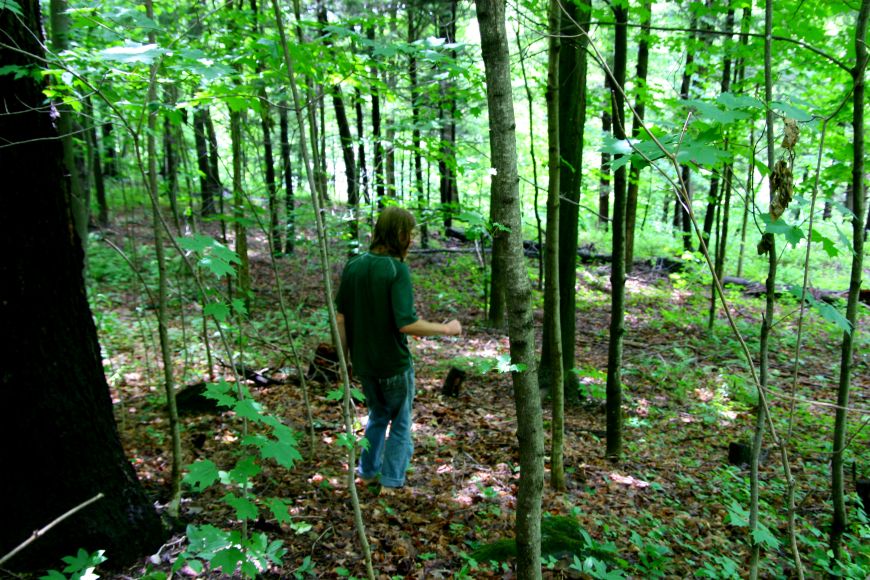
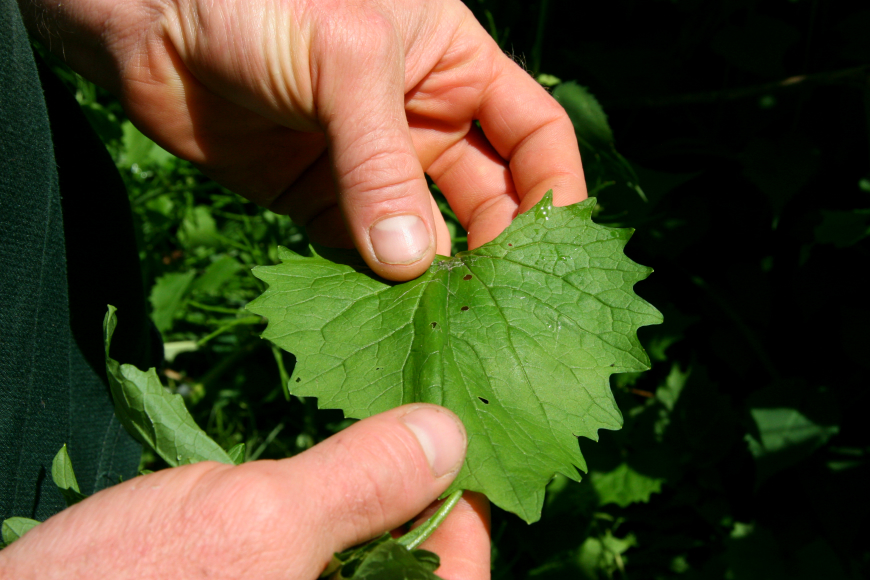
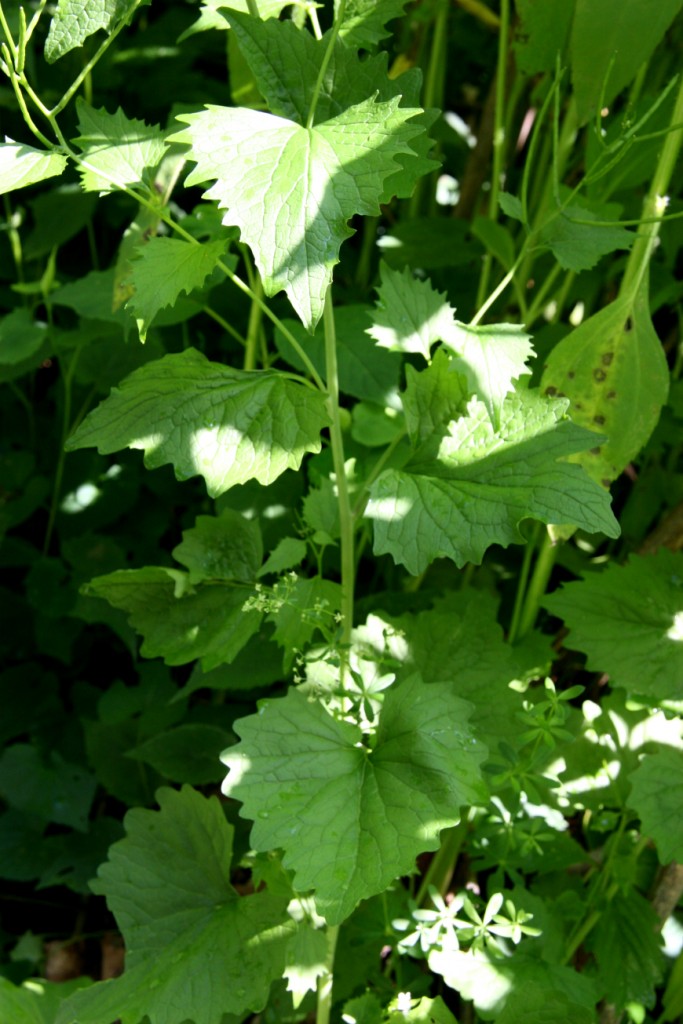
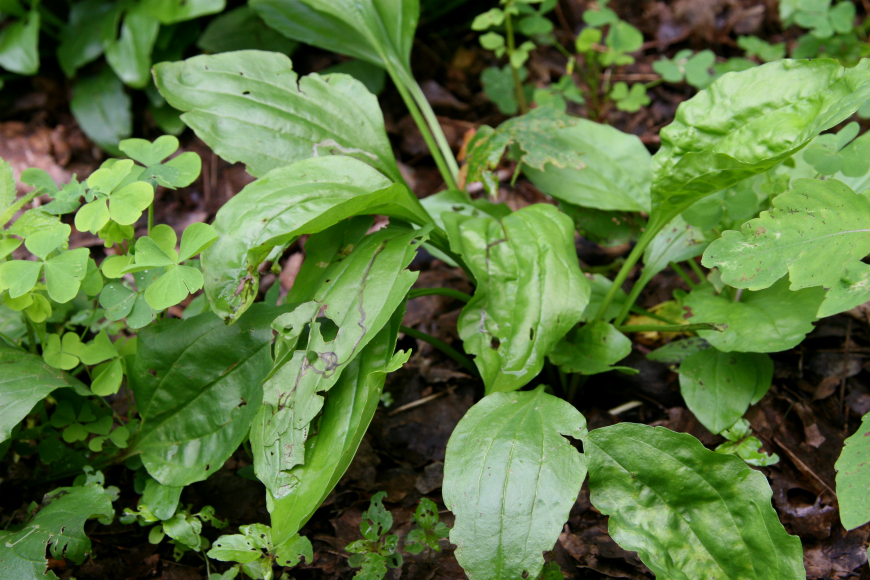
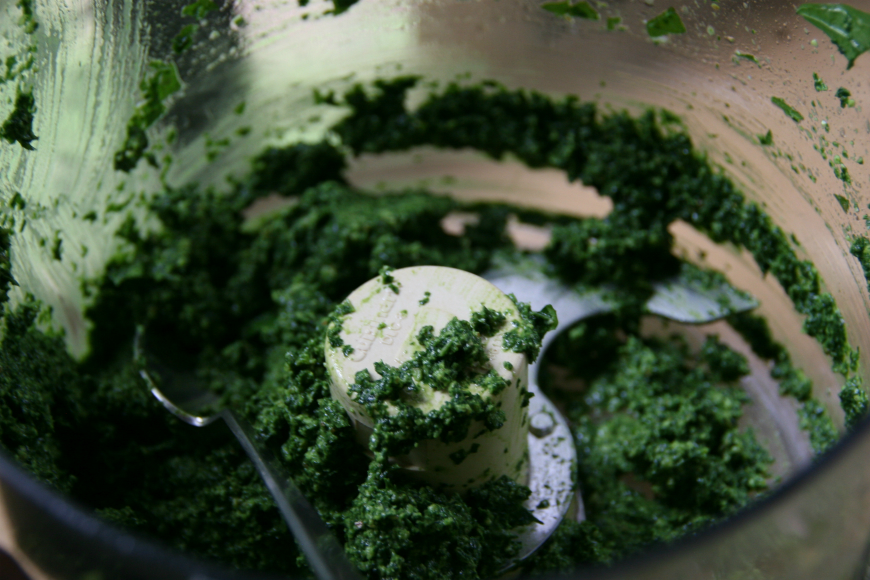
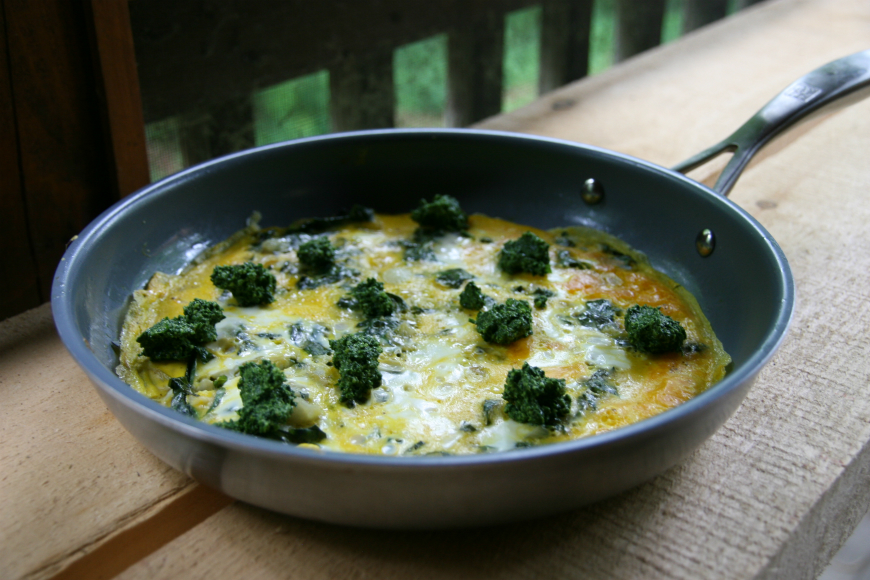



In your photo of the plantain is another edible, wood sorrel. Looks like clover tastes like lemon. Good as a garnish on salads. Young nettles make a nice pesto – blanch to remove the sting. Also lambs quarters are excellent as a pesto, and of course early spring dandelion leaves are good in salads…before they get big and bitter. All are very common and usually available within a short walk of your back door.